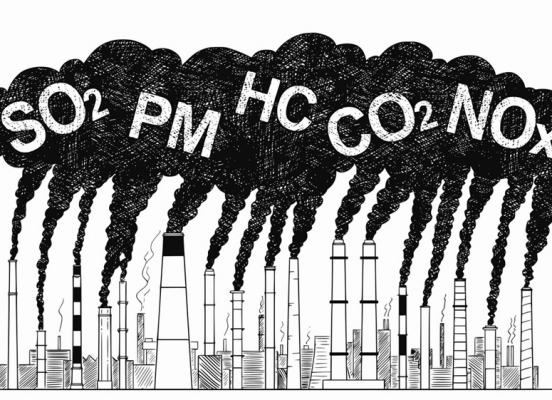Understanding Air Pollution Control Equipment
In this day and age, pollution control systems are a must. Air pollutants are generated through both natural—e.g., volcanic eruptions and wildfires—and human-made sources—including mobile and stationary ones. Mobile refers to moving sources, such as airplanes, trains, and automobiles, while stationary refers to fixed industrial sources, such as power plants, factories, and other facilities. Stationary sources are further broken into major and area sources: major sources emit either 10 or more tons of a single air pollutant or 25 or more tons of a combination of air pollutants, while area sources emit less than 10 tons of a single pollutant or less than 25 tons of a combination of pollutants. In high enough concentrations, the pollutants produced by either mobile or stationary sources could cause adverse effects to the atmosphere, the surrounding environment, and human life, such as increasing the average global temperature, decreasing atmospheric visibility, diminishing air quality, and affecting human health. The Environmental Protection Agency (EPA) implemented the Clean Air Act (CAA) which imposed regulations on both sources of air pollutants to help mitigate their effect on the atmosphere, the environment, and human life.
The types of pollutants regulated by the EPA are divided into three groups, which include criteria air pollutants, air toxics, and greenhouse gases.
- Criteria air pollutants are a group of six common air pollutants—i.e., particulate matter (PM), photochemical oxidants (e.g., ozone), carbon monoxide, sulfur oxide, nitrogen oxide, and lead—which can negatively affect public health and welfare, the atmosphere and environment, and surrounding structures.
- The term “air toxics” refers to a list of over 180 air pollutants—e.g., organic chemicals, volatile organic compounds (VOCs), metals, and metal compounds, including fuels, solvents, mercury, arsenic, asbestos, and benzene—which yield hazardous health and environment effects even when present in trace amounts and produced by fewer sources compared to criteria pollutants.
- Greenhouse gases (GHGs) refer to gases, including carbon dioxide, chlorofluorocarbons (CFCs), methane, and ozone, which both affect human health and contribute to the escalation of the greenhouse effect on Earth and the subsequent effect on the global climate.
Altogether, the regulations surrounding these different types of air pollutants dictate some of the considerations that industries must keep in mind to remain compliant with the EPA standards—such as implementing the necessary and proper air pollution control equipment and systems—and avoid government repercussions.
This article explores the various types of air pollution control equipment available to address stationary sources of air pollutants and explains their respective functions and mechanisms. Additionally, this article outlines the selection considerations and common applications for each control device.
Types of Air Pollution Control Systems and Equipment
Air pollutants are generated by nearly every facet of the industrial process, including raw material sourcing, product manufacturing, maintenance and repair services, and distribution. Consequently, there are several different types of air pollution control equipment available for air pollutants produced by both mobile and stationary sources across a wide range of industries. However, this article focuses mainly on control equipment for stationary-sourced air pollutants, such as those produced during combustion processes.
In an industrial setting, air pollution control equipment is an umbrella term referring to equipment and systems used to regulate and eliminate the emission of potentially hazardous substances—including particulate matter and gases—produced by manufacturing, process system, and research applications into the air, atmosphere, and surrounding environment. Control equipment has applications in a wide range of industries, preventing the release of chemicals, vapors, and dust and filtering and purifying the air within the work environment. Typically, fans or blowers direct industrial exhaust and emissions into the air pollution control equipment and systems which remove or reduce air pollutants through the use of one or more of the following processes:
- Combustion (i.e., destroying the pollutant)
- Conversion (i.e., chemically changing the pollutant to a less harmful compound)
- Collection (i.e., removing the pollutant from the waste air before its release into the environment and atmosphere)
Some types of air pollution control equipment applied to industrial applications and which utilize one or more of the methods of air pollutant removal or reduction mentioned above include:
- Scrubbers
- Air Filters
- Cyclones
- Electrostatic Precipitators
- Mist Collectors
- Incinerators
- Catalytic Reactors
- Biofilters
To know more, please check Thomasnet

